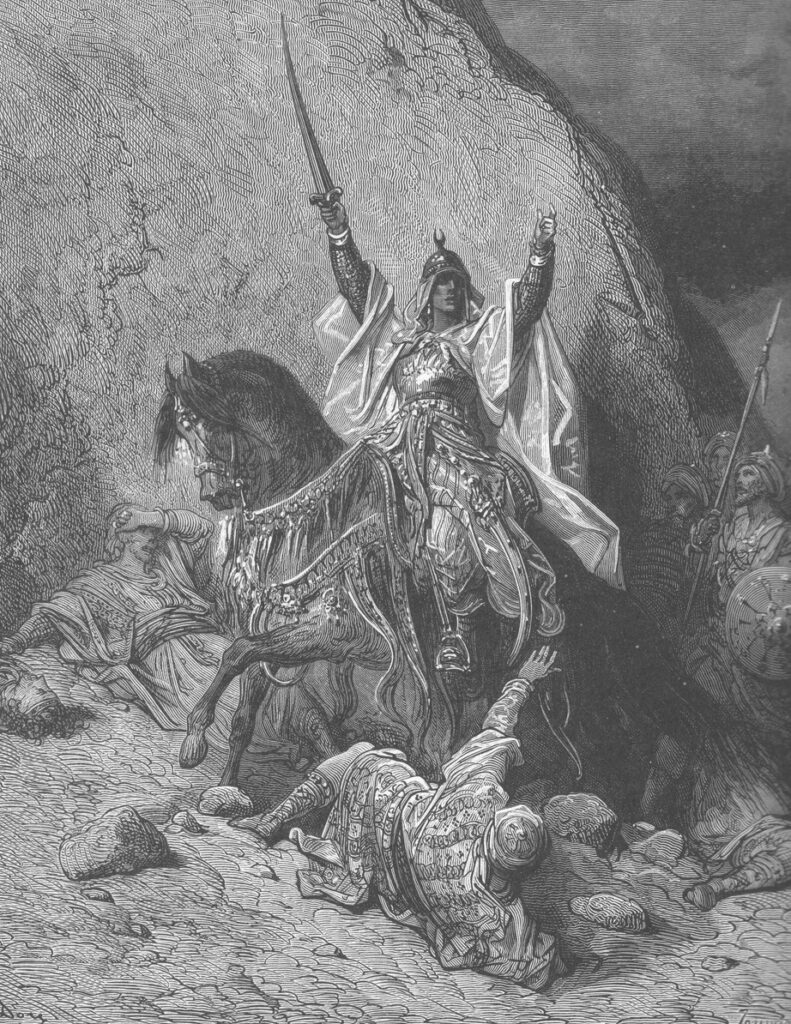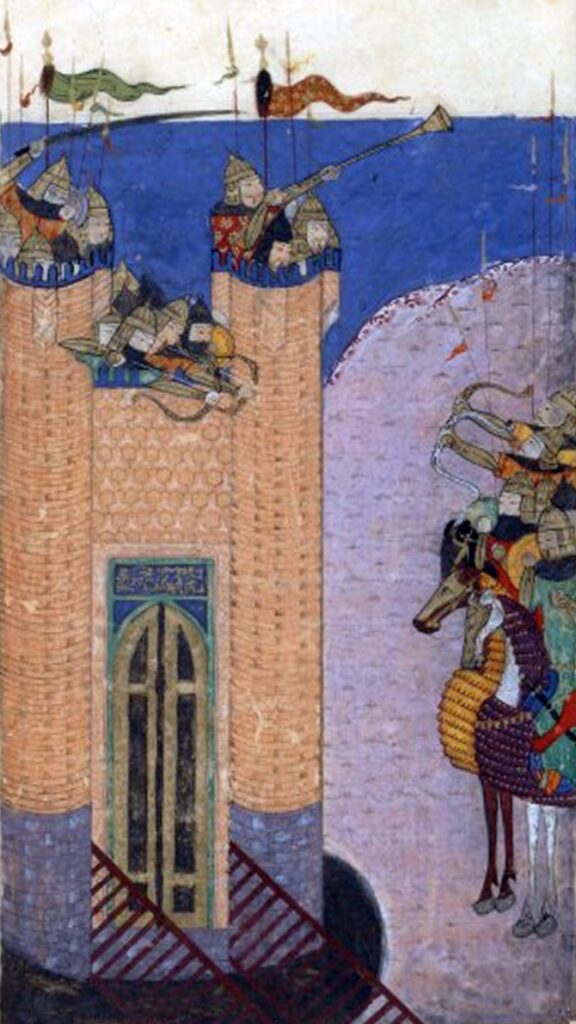The Order of Assassins: Where the Term “Assassin” Comes From

By Liam Nagle / Arab America Contributing Writer
When you think of the term “assassin”, a variety of topics might spring into mind. You might think of all sorts of villains from movies, television shows, books, or anything similar. Or you might think of real-life assassinations, targeting political or military figures like Abraham Lincoln or John F. Kennedy. The use of assassinations to bring political change has been employed for countless millennia; and the Arab world was no exception. In fact, the term “assassin” came from one such organization that operated in both Persia and the Levant – what has come to be known as the Order of Assassins. From 1090 to 1275, the Order of Assassins engaged in political assassinations against the various caliphates, as well as Christian kingdoms. Their overarching goal was to protect and potentially expand a particular Shia Islam sect –Nizari Ismailism.
Terminology

The term “assassin” specifically comes from the word “Assissini” in Italian and French. This word, in turn, is believed to originate from the Arabic word “hashshashin” – which was the term used to refer to the Order of Assassins.
To complicate things, the Order of Assassins was known under a wide variety of names. Ismailis themselves seemed to accept the term “batiniyya”. In contemporary literature, the state which they controlled is either called the “Order of Assassins” or the “Nizari Ismaili State”. The people living within this state are often called “Assassins” or “Hashshasin”. Denigrators have also called them “mulhid”, often used to mean “heretic” or “atheist”. To avoid confusion, I shall use the term “Order of Assassins” when referring to the state as a whole.
Origins

The Order of Assassins was a Nizari Ismaili state, with Nizari Ismailism being a sect within Shia Islam. It was founded by Hassan-i Sabbah, a Persian who was an accomplished scholar in mathematics, astronomy, and philosophy. He had converted to Ismailism at the age of 17, receiving substantial religious training and helped to convert segments of the populace in what-was-then the Seljuk Empire. Using this newfound power, he worked alongside the anti-Seljuk populace to besiege Alamut Castle, successfully taking it. From then on, Alamut Castle would serve as the overarching headquarters of Assassin activities. The Order of Assassins would continue to expand their influence, managing to take several other castles and solidifying itself as a state within the Middle East.
The goals of the Order of Assassins stemmed from the various Islamic schisms that took place after the death of the Prophet Muhammad. The various splits saw the ruling Fatimid Empire in modern-day North Africa and the Levant embracing Mustansir Ismailism, the opposing force to Nizari Ismailism. As such, when Hassan-i Sabbah formed the Order of Assassins, he put his newfound state in direct competition with various other, larger Islamic empires – the Sunni Seljuk Empire, as well as the Shia & Mustansir Ismaili Fatimid Caliphate.
Assassinations

Given that the Order of Assassins was surrounded by enemies, they had to embrace a careful policy. When the Seljuks attempted to retake the castles that the Assassins controlled, the Sultan of the Seljuks died under mysterious circumstances in 1092 – the most likely explanation being that he was poisoned by a political rival. This assassination brought a halt to the Seljuk attacks, allowing the Order of Assassins to pursue expansion.
The remainder of the Order of Assassins’ history can be summarized as expansion into Syria and the Levant, while resisting attempted Seljuk attacks against them. Their initial attempts at expanding into Syria in the early 1100s saw them develop their assassination tactics. Throughout this time period, they would kill several emirs as well as one of the Fatimid caliphs. This would also eventually result in a Nizari Ismaili branch being formed in the Levant by Rashid ad-Din Sinan, with his headquarters being at Masyaf Castle.
Throughout its history, the Order of Assassins would successfully assassinate three Islamic caliphs, several emirs and viziers, and – during the crusades – various Christian counts and lords. They even attempted to assassinate the great Muslim sultan Saladin, who believed the Order of Assassins to be heretics. Saladin and Sinan were bitter enemies. At one point in 1176, Saladin was very close to wiping out the Order of Assassins in the Levant and was in the process of besieging Masyaf Castle, but – for unknown reasons – had to withdraw. One legend is that Saladin awoke one night to a figure leaving his tent, and a note with a poison dagger left at his bedside. He cried out that it was Sinan himself who had left the note and, realizing that his life was in danger, sought instead to reach an agreement with the Order.
Downfall

The Order of Assassins came to an end in the late 1200s. As the Mongol Empire expanded westwards into Iran in the early-to-mid 1200s, the Order was seen as the next in line. In 1256, negotiations between the Order and the Mongols failed – and the Mongols came in full force. After a few years of war, the last castle controlled by the Order fell in 1273. A Mongol massacre at Alamut devastated the political power of the Nizar Ismailis, with the Mongols now coming in control over the territory.
After the Mongol conquests, the Assassins were fractured beyond repair. Many Assassins offered their services as assassins-for-hire. This only occurred for a brief time, however, as there are no recorded instances of such assassins existing into the 14th century. However, Nizar Ismailism continues to exist in large numbers in various areas of Syria, but also in Uzbekistan, Tajikistan, Afghanistan, Pakistan, India, and China. This goes to show that the legacy of the Order of Assassins – and Nizar Ismailism as a whole – still persists today.
Check out our Blog here!








